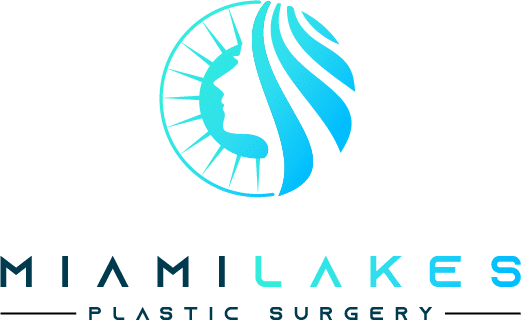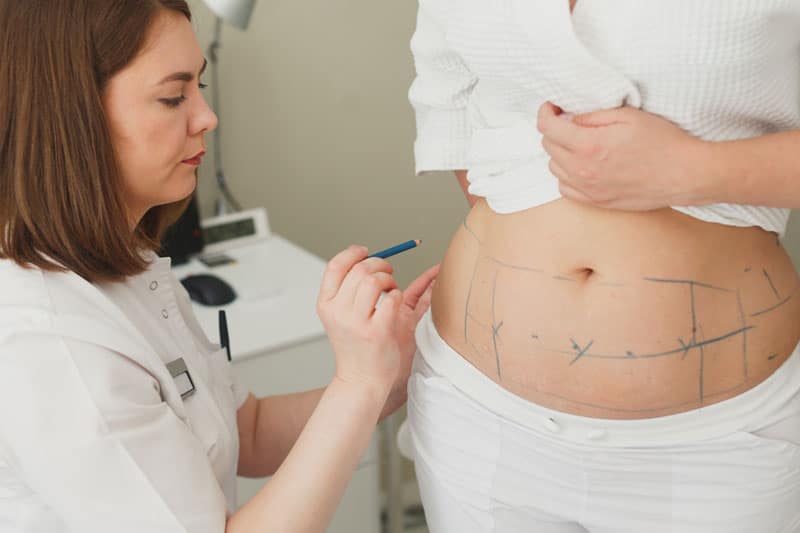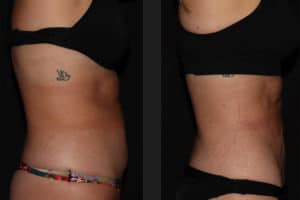What are the Different Kinds of Liposuction?
As far as modern techniques go there is only one kind of liposuction and all the fancy terms for you to add on procedures that have pluses and minuses and might be right for some people and not right for others.
When we talk about liposuction in today’s modern plastic surgery practices, we are describing a procedure during which tiny 3 to 4-millimeter incisions are made, numbing medicine is injected into the treatment area through those incisions, and then a long thin instrument called a cannula is used to suction away excess fat and achieve an improved body contour.
Liposuction can usually be performed either is a procedure under general anesthesia where you’re completely asleep and you have a machine helping you breathe. It can sometimes for limited cases be performed under local anesthesia so that you are numb in the treatment area but you are completely awake and breathing on your own, and then there are also the cases that are performed in something of a middle ground between these 2 extremes, and this is called twilight anesthesia or sedation, so that while you have numbing medicine in place you are also given an IV sedation by a board-certified anesthesiologist to make you feel a little bit loopy and you are dissociated from the goings-on and you are not as concerned with what’s happening so the liposuction is still a very comfortable process.
As part of the liposuction procedure, numbing medicine is injected into the treatment area through the small incisions, the numbing medicine is called a tumescent solution. The tumescent solution gets its name from the fact that the solution is injected until the treatment areas are firm or numb. That’s why some people refer to liposuction as it’s usually performed today in modern plastic surgery practices as tumescent liposuction.
The next term that often comes up in describing liposuction procedures is power-assisted liposuction. This refers to the fact that the liposuction device, the cannula, has a small motor attached that makes it vibrate back and forth in and out very quickly, and this essentially helps the surgeon suction out the excess fat more rapidly and with less effort.
While power-assisted liposuction makes the surgeon’s job easier it also helps them achieve better results because instead of enduring a pretty physically grueling process of suctioning large volumes of fat, power-assisted liposuction does a lot of the hard work for them so they can focus more on the fine details of the procedure and achieve truly excellent results.
Those are the major pieces of vocabulary people used to describe standard liposuction. There are liposuction and tumescent liposuction which are the same thing, and power-assisted liposuction which is just my perception with the addition of a motorized cannula to reduce the physical workload on the surgeon so that the surgeon can concentrate on achieving a great contour.
Some of the other fancy terms people apply to liposuction and the ones that we’re going to focus on here are Smart Lipo, V. A. S. E. R. Liposuction, BodyTite, and J Plasma.
All of these technologies have one thing in common. Their end goal is to heat the tissue to make the liposuction process easier for the surgeon to perform, and to tighten the skin of the treatment area so there is a reduced risk of skin laxity after performing the liposuction procedure.
In terms of a brief rundown of how each of these technologies works, Smart Liposuction relies on a laser to heat the surrounding tissue and achieve some degree of skin tightening, and to improve the surgeon’s ability to suction the treatment area. The BodyTite device uses radiofrequency energy to heat the treatment area and achieve these goals. V. A. S. E. R. Liposuction uses ultrasound energy to heat the tissue in the treatment area and finally, J Plasma uses radiofrequency energy to heat helium gas and cause tissue contraction and improve the surgeon’s ability to get through the tissue with energy from that process.
While body the BodyTite and J Plasma both use radiofrequency energy, an important distinguishing feature here is that the J Plasma device is unipolar, meaning there is only a heat source under the skin, whereas the BodyTite device uses bipolar radiofrequency energy, so the radiofrequency energy is essentially fired between a probe under the skin to one over the skin and vice versa, and temperatures are very precisely controlled to both of those points to ensure both safety and efficacy.
Here is a brief overview of how these different technologies work to produce heat that can enhance the results of a liposuction procedure. Let’s look at how each of these technologies performs concerning each of those goals: making the liposuction procedure easier to perform, and more importantly, achieving some degree of skin tightening.
In terms of the goal of making liposuction easier to perform and thereby facilitating a better result, the V. A. S. E. R. Liposuction system winds out here. The V. A. S. E. R. Liposuction system uses ultrasound or a super-fast vibrating wand to induce a state called cavitation, which essentially shakes fat cells free of surrounding connective tissue, and the result is that performing liposuction after the tissue has been treated with this ultrasound is extremely easy. Although this type of liposuction is not indicated or required in most liposuction cases, there are two specific instances in which it can come in very handy.
That is in the case of Gynecomastia or male breast reduction the V. A. S. E. R. system breaks up the tough fat in the male breast very nicely and makes it amenable to suction.
In secondary liposuction cases, when surgeons perform liposuction on people that have previously had liposuction, the V. A. S. E. R. system comes in very handy because it shakes up the fat cells that are attached to existing scar and it makes them a lot easier to suction out with the liposuction cannula.
In terms of the other goal of achieving some degree of skin tightening, the radio frequency that is achieved with a BodyTite, the bipolar radiofrequency device does work very well, however, this is a procedure that is very dependent on two things:
- The skill of the person performing the procedure.
- Patient selection.
This is a technically difficult procedure to perform because it is bipolar radiofrequency energy, so both the internal and external poles need to be kept at fairly precise temperatures for the right amount of time to achieve the desired result of tissue contraction. This is something that requires great expertise with the BodyTite device to truly master.
The next component, patient selection, is so important because while BodyTite radiofrequency skin tightening can be truly a great adjunct to liposuction if someone has skin laxity that is too extreme for the device they’re just not going to achieve a satisfying result. Patients need an experienced board-certified plastic surgeon here to be able to identify those individuals who will see the excellent results from the BodyTite procedure when performed in conjunction with liposuction.
In terms of the other 2 technologies, J Plasma and Smart Liposuction, many doctors have not been impressed with them. And as far as Smart Lipo goes, this is a moderately useful technology for skin tightening, but for some, it would not be the go-to choice, they would almost always use either V. A. S. E. R. liposuction or BodyTite in conjunction with liposuction for skin tightening before turning to Smart Lipo, but if Smart Lipo is the only available option or if a patient has previously tried V. A. S. E. R. or BodyTite and wanted to try something new, then Smart Lipo might be a reasonable option to check out.





